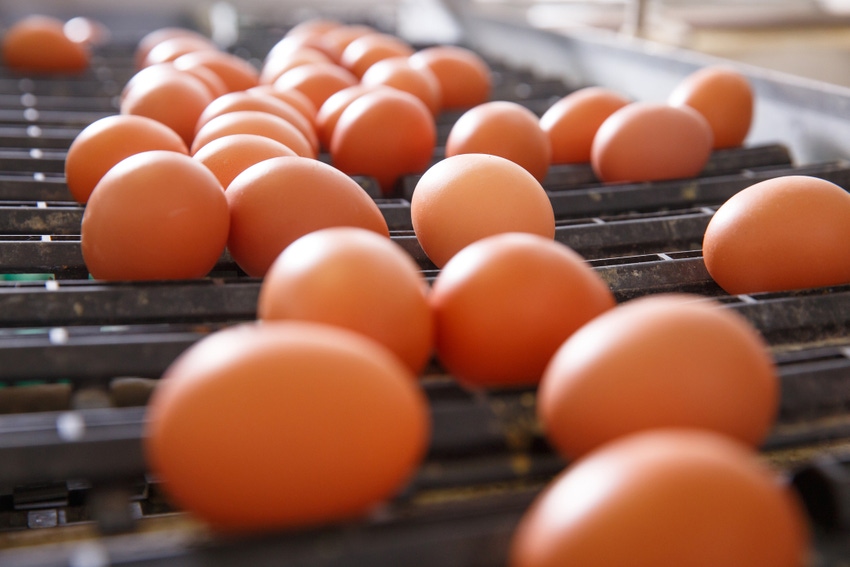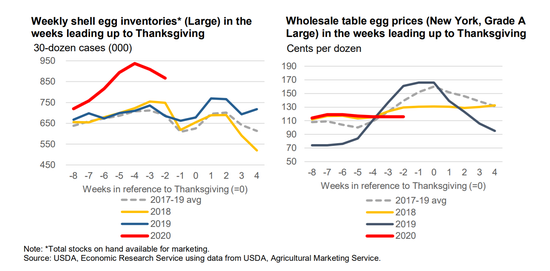Shell egg inventories have been about 23-32% higher year over year in recent weeks.
November 18, 2020

The egg industry was caught off guard in March and April, when a perfect storm of Easter demand and COVID-19-related retail surges caused inventory levels to plummet and wholesale egg prices to reach record highs, according to the U.S. Department of Agriculture’s “Livestock, Dairy & Poultry Outlook.”
Despite what is likely to be an uncertain holiday season this year, USDA economists Kim Ha and Grace Grossen noted that U.S. producers have built large shell egg inventories, which have averaged more than 910,000 thirty-dozen cases in recent weeks. This is about 23-32% higher year over year, USDA said.

According to Ha and Grossen, retail demand for eggs and wholesale prices typically increase in November, when holiday baking season begins. This holiday season will likely be different for a myriad of reasons, they said, including smaller holiday gatherings due to increased COVID-19 spread in the U.S., as well as cold weather pushing people toward indoor hobbies like baking.
USDA said wholesale prices have remained steady at $1.16/doz. in November, at a time they typically increase. As indicated by national retail egg purchasing data, retail demand is elevated relative to both last year and historical levels, Ha and Grossen said.
“Despite this increased retail activity, it appears that abundant inventory levels have likely outpaced demand. Egg prices are expected to increase, but how much will likely depend on the extent that retail demand increases,” they said.
USDA left the fourth-quarter 2020 wholesale price forecast unchanged.
Meanwhile, USDA estimated September table egg production at 651 million doz., a year-over-year decrease of 3.1%. Consistent with seasonal patterns, the table egg layer flock expanded relative to August, reaching 319.6 million layers, but it is still 4.2% lower than last year’s flock. Ha and Grossen said this is due, in large part, to weak foodservice demand for breaking eggs.
The September average lay rate was 81.5 eggs per 100 layers per day, a 1.1% increase from 2019. USDA left the fourth-quarter 2020 table egg production forecast unchanged.
You May Also Like

.png?width=300&auto=webp&quality=80&disable=upscale)

